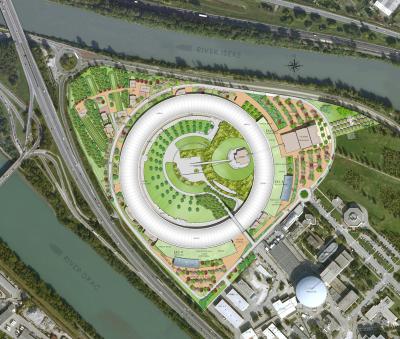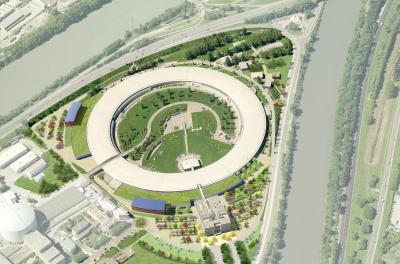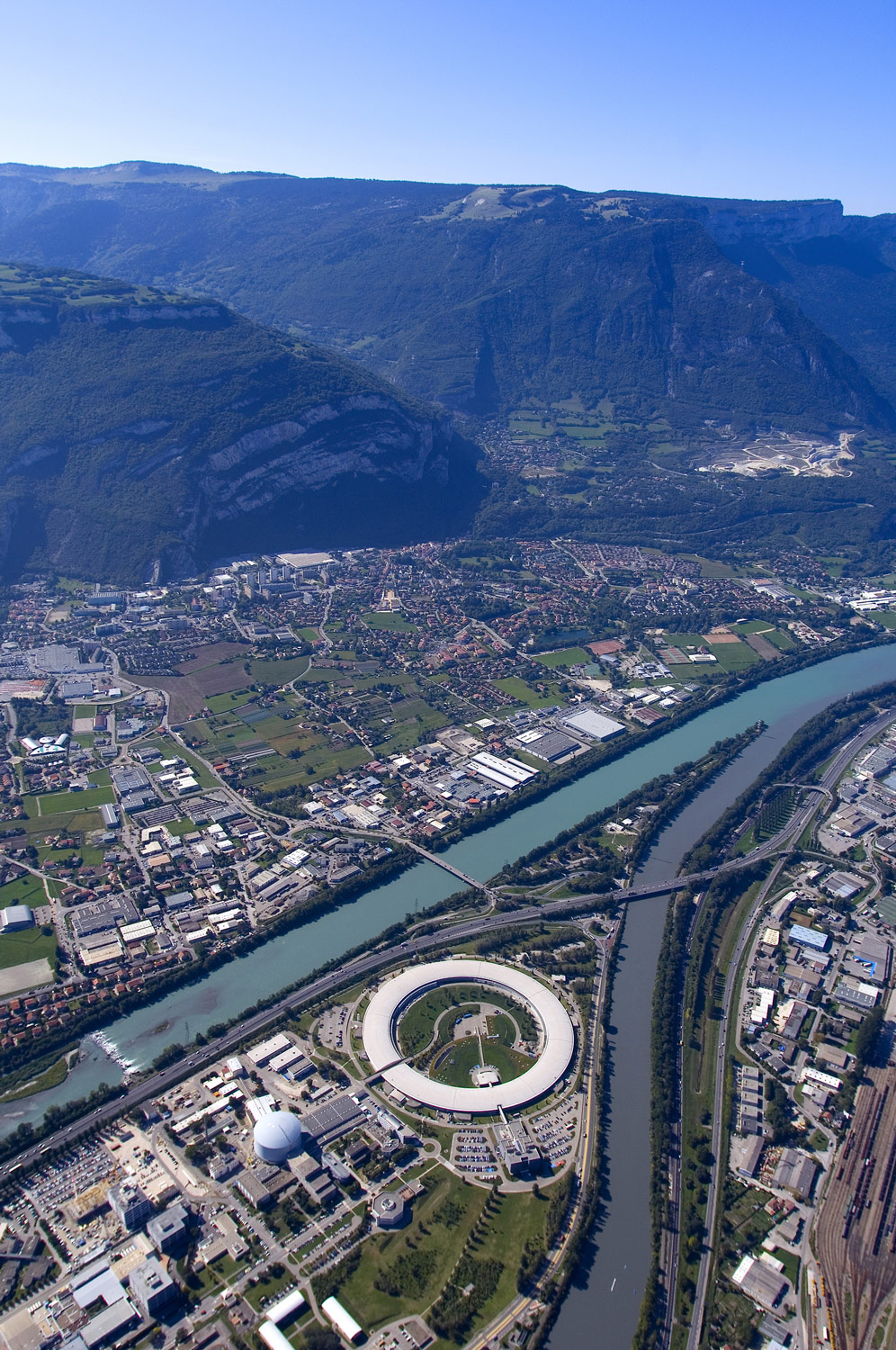- Home
- News
- General News
- The ESRF launches...
The ESRF launches an ambitious Upgrade Programme
25-11-2008
PRESS RELEASE - Grenoble, 25 November 2008 - More than ten thousand scientists across Europe will profit from new investments in the European Synchrotron Radiation Facility (ESRF) approved today. Over the next seven years, unique new experimental facilities for research with X-rays will come into operation. This decision, taken by the ESRF Council, representing the 19 countries financing the ESRF, confirms Europe’s vision to expand its global leadership in photon science.
Share
On 24-25 November 2008, the 50th Council meeting of the ESRF approved a 10% budget increase for 2009, to start a 177 million Euros Upgrade Programme over the next seven years (2009-2015). The main element of this programme is the development of new world-class experimental stations (beamlines) which will gradually enter into service as of 2011.
The ESRF Upgrade Programme builds on the fact that no other research infrastructure is growing faster than light sources: since 1994 when the ESRF was inaugurated, more than twenty new synchrotrons opened in Europe, the US and Asia. They produce cutting-edge science, illustrated by the publication of at least one paper on average in every single issue of “Science” and “Nature” in 2007. As much as 20% of this global scientific output originated at the ESRF and much of it is relevant to everyday life. Whether it relates to promising targets for a new drug, candidate materials for hydrogen storage in cars, dust grains collected in outer space or liquid-crystal photovoltaic cells, there is a high probability that such research includes experiments at the ESRF to determine structures and properties at the atomic scale with unequalled resolution and accuracy.
 |
|
|
Artist's impression of an Experimental Hall extension at the ESRF to house new, longer beamlines and laboratories. Credits: ESRF/Sud Architectes. |
 |
|
 |
|
| Artist's impression of the ESRF with the extensions of the Upgrade Programme. Credits: ESRF/ Sud Architectes. | |
|---|---|
|
|
|
|
Aerial view of the ESRF. Credits: Denis Morel. |
“I am convinced that the Upgrade Programme will ensure the competitiveness of the ESRF for the benefit of Europe and European science” says Professor Robert Feidenhans’l, Deputy Director of the Niels-Bohr Institute in Copenhagen and Chairman of the ESRF Council. The five key targets of the Upgrade Programme are:
Nanoscience and technology: Molecular machines, quantum dots or self-assembling 2-D crystals sound like magic words today but nanotechnology will be in tomorrow’s consumer products. The future nanoscience beamlines at the ESRF are a foundation stone for such nano-engineering.
Structural biology and soft matter: Progress in health and life sciences is linked to understanding processes at the atomic scale. There is an explosion today in demand to resolve the structure of molecules for the development of new drugs. A new generation of automated experiments will screen about a thousand samples in a single day.
Ultrafast molecular processes: Studying a chemical reaction as it happens, like in a film, is possible today, but not at sufficient speed. Pushing the time-resolution into the picosecond (one trillionth of a second) regime will open new insight in chemical processing, catalysis and how proteins function in living cells.
Science at extreme conditions: Developing advanced materials, chemical processing and planetary science all need to put samples under extreme pressure, temperatures and magnetic fields. Whatever the extreme, the ESRF will strive to make it available in situ on one of its beamlines.
X-ray imaging: Revealing both the 3-D structure and the chemical composition of an object without altering it has countless applications in materials science, cultural heritage and engineering. The objective in this field is to resolve structures smaller than one micrometre.
“It was a challenging task to satisfy the needs of a huge and varied scientific community from many countries, and even more challenging to strike a balance between ambition and affordability. I am very grateful to our member countries. Despite a difficult funding context, they have given the green light for our Upgrade Programme, which will ensure a very bright future for the ESRF”, says Professor Bill Stirling, Director General of the ESRF.
For more information on the Upgrade Programme, please go to http://www.esrf.fr/about/upgrade.html
Media contact: Montserrat Capellas, tel +33 476 88 26 63 or press@esrf.fr.
Top image: Aerial view of the ESRF. Credits: Denis Morel.




